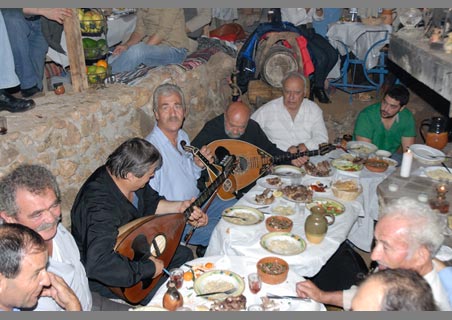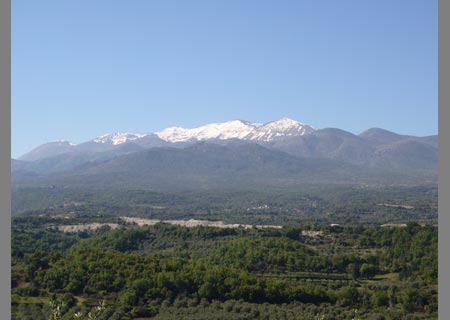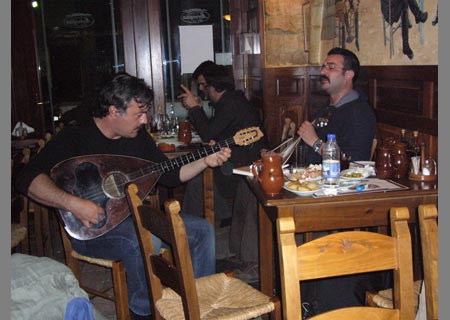Dialogues in Rhyme: The Performative Contexts of Cretan Mantinádes
- Volume 24, Number 1
- Venla Sykäri
- View PDF | Download PDF
- http://journal.oraltradition.org/issues/24i/sykari
Abstract
In Crete, the strong local identity has helped a communicative form of oral poetry, the mantináde, survive to the present day. Emblematic of the performance and composition of these short rhyming couplets is a multilayered dialogism—performative, referential, and textual—that also pervades modern arenas (poems are very popular in the media and even exchanged as text messages). In order to understand how dialogism is embedded in the tradition, this article presents mantinádes as traditionally sung and recited in a wide range of performative discourses.
eCompanion
The workshop of Antónis Stefanákis in Zarós. Stefanákis constructs all kinds of stringed instruments. Visible here are two laoúta, two bouzoukis, and a laoúto (hanging on the wall); situated on the table are half-made lyras.
Photo: Venla Sykäri.
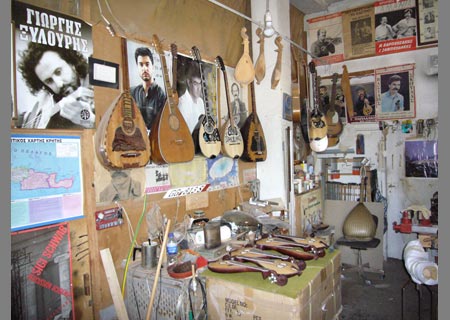

Antónis Stefanákis still makes reed pipes (called the habióli or thiambóli, depending on the region) and he is most likely the last one in Crete to play this pastoral instrument.
Photo: Venla Sykäri.


A paréa in Ierápetra, with Egglezonikolís on the violin. The photograph was taken during the first half of the 1960s.
Photo: Venla Sykäri.


Antonis Papadomanolákis on the laoúto and Kostas Kiritsákis on the lyra during a performance at the mezedopolío Mesostrati, Rethymno. May, 2007.
Photo: Venla Sykäri.


A local ensemble in a baptismal glénti held at the village society’s festival hall. Milopótamos, October, 2004.
Photo: Venla Sykäri.
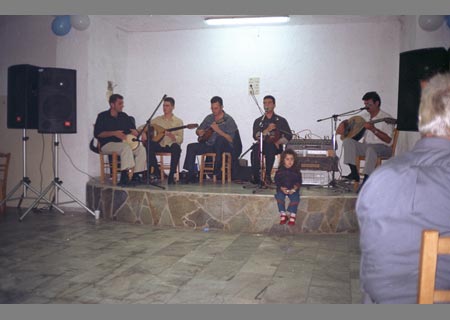

Parents, godparents, and close relatives begin the first dance to the sirtós tune.
Photo: Venla Sykäri.


The paréa of the father and godfather singing mantinádes at the end of the evening.
Photo: Venla Sykäri.


A paréa in Ierápetra during the early 1960s. Manólis Egglezákis plays the violin.
Photo: Venla Sykäri.
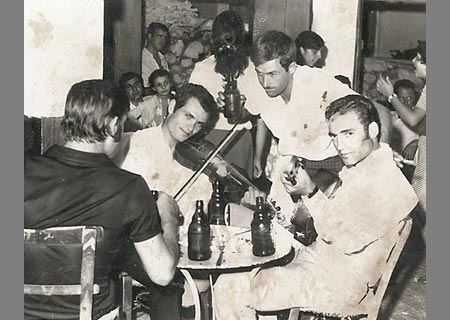

A contemporary paréa in Rethymnon on the 3rd of November, 2007. The lyra is played by Antónis Pavlákis, the laoúta by Giánnis Apostolákis (left) and Giánnis Markogiánnis.
Photo: Venla Sykäri.
